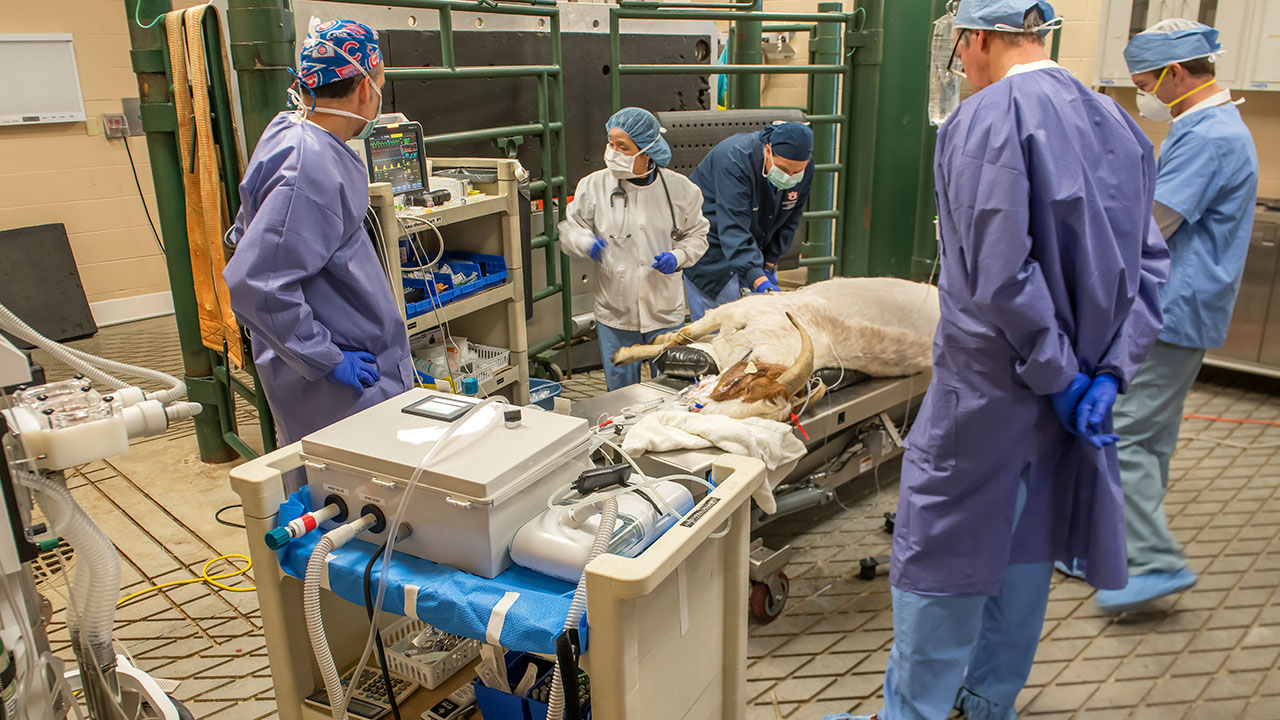Auburn’s CPAP-to-ventilator device passes major test on live animal
Published: Apr 8, 2020 12:00 AM
By Jeremy Henderson
AUBURN, Ala.--As life-saving ventilators grow scarcer worldwide in the fight against COVID-19, an Auburn University research team is racing against the clock to get a device they’ve built into mass production. The innovative unit—which turns a CPAP machine into an emergency ventilator—was successfully tested on a live goat last Friday.
The device, named RE-InVENT, can be assembled using approximately $700 in readily available components, in addition to a standard CPAP machine.
On Friday, April 3, a 200-pound male Boer goat was anesthetized and ventilated with a RE-InVENT system for approximately two hours in Auburn’s College of Veterinary Medicine’s Vaughan Large Animal Teaching Hospital. Goats of this size have lung capacity similar to that of humans.
“It went better than I expected in being able to ventilate the animal,” said anesthesiologist Glenn Woods, who is affiliated with multiple Alabama hospitals. “This test confirms RE-InVENT’s potential to meet the demand for desperately needed ventilators.”
Stuart Clark-Price, associate professor of anesthesiology, supervised the first animal test of the RE-InVENT device.
“A functioning ventilator is one of the most important tools hospitals have for helping COVID-19 patients,” Clark-Price said. “In our test we were able to ventilate the goat and safely maintain appropriate oxygen content his blood. Then he was brought out from under anesthesia and fully recovered to return to normal activity.”
Now that the team has successfully tested the new ventilator, its next step is to look for ways to increase the unit’s capacity.
"We knew in the beginning that even though our original concept was pressure-limited, it could serve many patients,” said Joe Ragan, a lecturer in mechanical engineering who handled computer-aided modeling for the RE-InVENT and assisted with its mechanical design. “Now we're looking to boost pressure in order to narrow the gap between our machine and fully developed ventilators."
The team is currently developing a peripheral "booster box" that would essentially double the device's pressurization capacity by employing an additional CPAP machine.
"Essentially, we are using a CPAP machine to pressurize the air inside an air-tight compartment, and then another CPAP machine to pressurize that pressurized air," said assistant mechanical engineering professor Michael Zabala, who is helping lead the RE-InVENT project. “We like the results we are seeing and believe this holds great promise.”
For more on the latest Re-InVENT test results, click here.
Media Contact: , austinp@auburn.edu, 205-616-9037

On Friday, April 3, a 200-pound male Boer goat was anesthetized and ventilated with a RE-InVENT system for approximately two hours in Auburn’s College of Veterinary Medicine’s Vaughan Large Animal Teaching Hospital.





